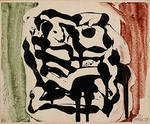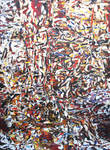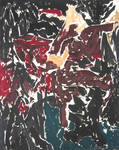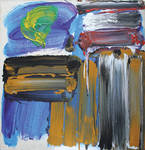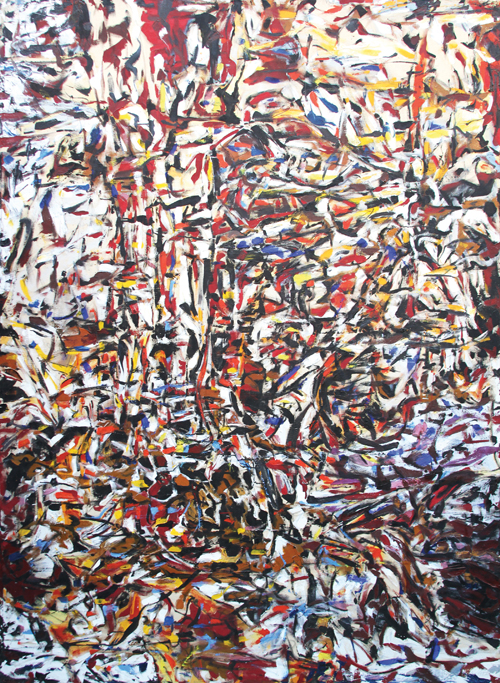
THREE DECADES OF ERNEST BRIGGS’ ABSTRACT EXPRESSIONIST PAINTINGS
April 17 – August 2012
A native of San Diego, Briggs studied at the California School of Fine Arts in San Francisco (1946-47), the first independent art school outside of New York, where Douglas MacAgy brought together a remarkable faculty including Mark Rothko, Ad Reinhardt, David Park and Clyfford Still. Their influence, in particular, that of his mentor and friend, Still’s visionary aspirations, remained with him for life. In the early 1950s Briggs was pulled along with the Californian diaspora to New York. Almost immediately he was given a one-man show at the Stable Gallery. He developed the rugged California aesthetic into sensual, refined and inviting explosions of paint. He was featured in the “Twelve Americans” exhibition in 1956 at the Museum of Modern Art, curated by Dorothy Miller.
“The discipline to free one’s image from the conventional aspects without surrendering the affirmative drama of human insight to the sterility of decoration or simple design problems has been, and I believe will be, my continuing direction.” (Ernest Briggs, 1956)
“His painting seems to be a process of thoughtful, ruminative adventure. Unlike many of his colleagues in idiom, he does not repeat himself. Each of his canvases strikes in a different direction, but most of them are admirably consistent and well integrated; if you think this type of painting invariably means an unleashed and unconsidered flinging of brushes and pigment, take a good, long look at Briggs and learn your errors.” (Alfred Frankenstein, The San Francisco Chronicle, 1949)
“From the contrast between the surface bravura and the half-seen abstract shapes, a surprising intimacy arises which is like seeing a public statue, thinking itself unobserved, move.” (Frank O’Hara, Art News, May 1954)
“There is a depth and dynamism in Ernest Briggs’ non-objective painting such as is seldom seen in these parts … they have a feeling of flood and sway, of a pouring of forces and tensions across the canvas field. It is as if, to use a slightly mixed metaphor, there were a great wind blowing through all his paintings. There is a kind of dynamism here which gives the effect of living, abstract gesture.” (Lawrence Ferlinghetti, 1953)
“The styl[e] of Briggs … in the fifties does bear a family resemblance to Still’s while differing substantially because of [his] more explicit references to nature, … greater lyricism, and … stress on painterly finesse.” (Irving Sandler, The New York School, 1978)
- Ernest Briggs, Untitled, Jul 1961, 106″ x 89″
- Ernest Briggs, Couple II, 1969, Oil on canvas, 12 3/8″ x 15 1/4″
- Ernest Briggs, Sketch for a Crucifixtion, 1981, 69 1/2″ x 67 1/2″
- Ernest Briggs, Untitled, Dec 1952, Oil on canvas, 92″ x 68″
- Ernest Briggs, Untitled, Sep 1961, Oil on canvas, 51″ x 40″
- Ernest Briggs, Untitled, 1960s, Oil on canvas, 69″ x 52″
- Ernest Briggs, Untitled, 1974, Acrylic on canvas, 35″ x 36 1/2″




